- Author Jason Gerald [email protected].
- Public 2023-12-16 10:50.
- Last modified 2025-01-23 12:04.
If you want to affix a consistent header to your PowerPoint presentation, you'll need to manually position the text box or image at the top of the master slide design. PowerPoint has a built-in “header” tool, but it won't appear in the onscreen version of the presentation, and only appears in printed notes and handouts. Learn how to manually create headers in “Slide Master” so that the slides on the screen look exactly the way you want them to.
Step
Method 1 of 3: Using an Image or Text Box as a Header on a Slider

Step 1. Click “View”, then “Slide Master”
You can add an image or a series of text at the top of each slide by adding it to the Slide Master. The Slide Master contains all the information that will repeat itself throughout the presentation, such as the background and initial positioning of objects, and can be edited at any time during presentation creation.
On a Mac, click “View”, “Master”, then “Slide Master”
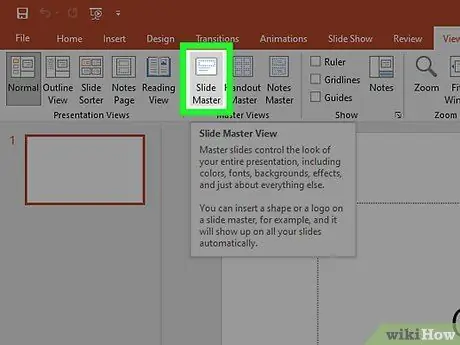
Step 2. Click the first slide in Slide Master view
To make sure the header text or image appears at the top of each slide, you first need to work on the first slide in your presentation.
Any changes made to this slide will affect the other slides in the presentation
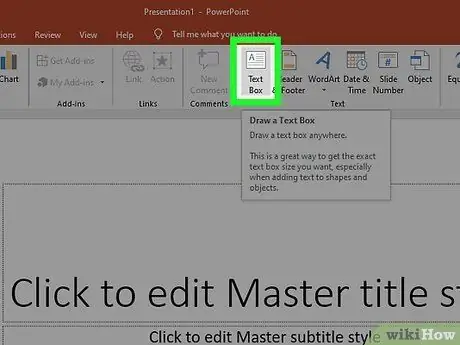
Step 3. Enter the text box
To include a series of text at the top of each slide, click “Insert” then “Text Box” (text box). The cursor will change to an arrow. Click and hold the mouse button while moving the cursor to the left to create a text box. When you reach the optimal size, release the mouse button and type in your header text.
- Select one of the alignment options (left, center, or right) from the “Paragraph” area to align the text.
- To change the color or typeface, highlight what is typed and select a different option from the text format area in the toolbar above.
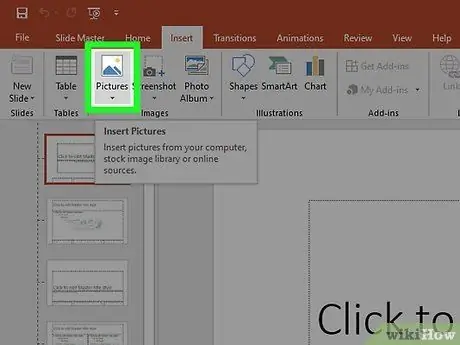
Step 4. Insert an image or logo
If you want to use an image as a header, click “Insert”, then “Picture”. Select an image from the dialog box, then click “Open” to insert it.
- Drag any of the four corners of the new image to resize the image without changing the ratio.
- Click inside the image and drag to move the entire image.

Step 5. Insert Word Art
If you want to change some of the text with special effects, click “Insert”, then “Word Art”. Select one of the text style options, then start typing.
- In some versions of PowerPoint for Mac, Word Art is inserted by clicking “Insert”, “Text”, then “Word Art”.
- To customize the appearance of the text, highlight the typed text and use “Text Fill” to change the color, “Text Outline” to change the frame, and “Text Effects” to add effects such as shadows and embossing.
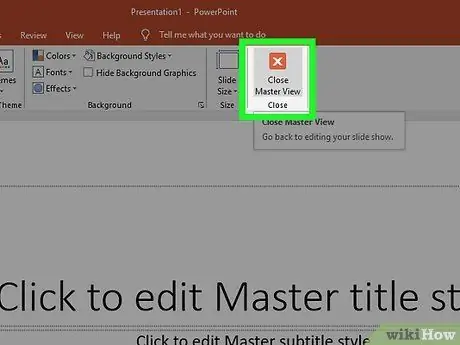
Step 6. Click “Close Master View” to exit Slide Master mode
You will be taken back to the PowerPoint presentation in normal editing mode.
Method 2 of 3: Adding Headers for Printing Notes and Leaflets
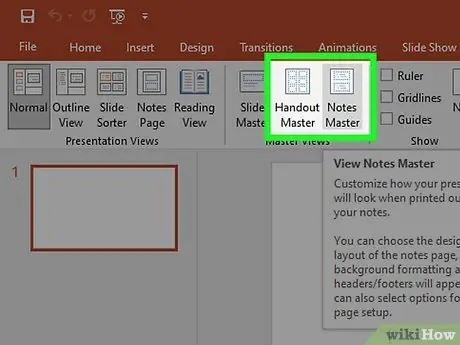
Step 1. Click “View”, then “Notes Master” (notes master) or “Handouts Master” (handout master)
. The header will only appear on printed handouts or presentation notes, and not on all slides that are displayed during the presentation. Headers in Notes and Handouts are limited to text only.
- Select “Notes Master” if you want to view and print the presentation as one slide per page that sits over the lined area designated for annotating.
- Select “Handout Master” if you want to print the presentation as a series of slides (without an area to add margins) on a single page.
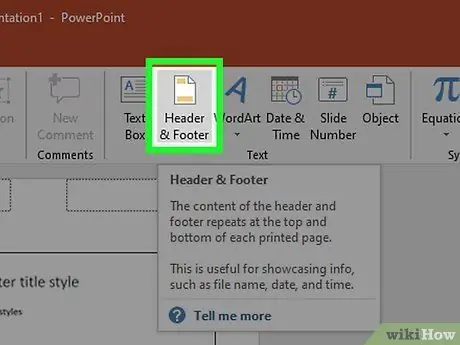
Step 2. Click “Insert”, then “Header & Footer”
You will be automatically taken to the Notes and Handouts label on the “Header & Footer” screen.
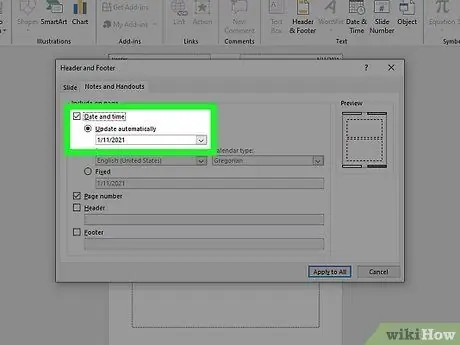
Step 3. Check “Date and Time” and select the time setting
Choose between “Update automatically” and “Fixed” as display type. If you selected “Fixed”, type the date in the blank space.
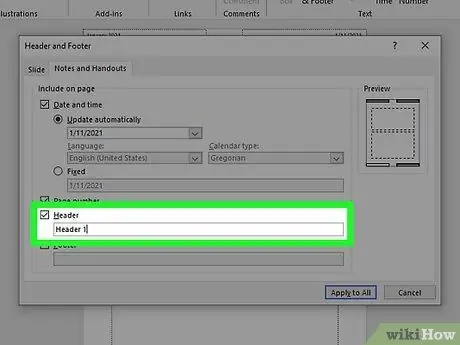
Step 4. Check “Header”, then type the desired header into the text box
You can also choose to add a footer here (which will appear at the bottom of the note or handout page), by checking “Footer” and entering the desired information.
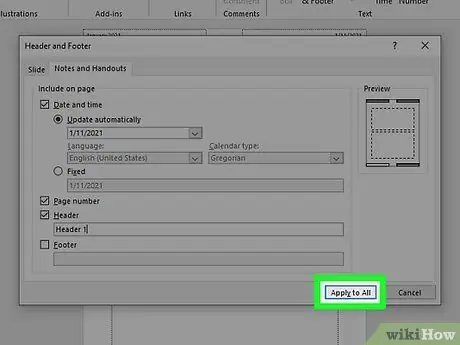
Step 5. Click “Apply to All” apply to all for all changes
This step will add a header (and footer, if you have one) for each printed page. You can come back at any time to change the header settings.
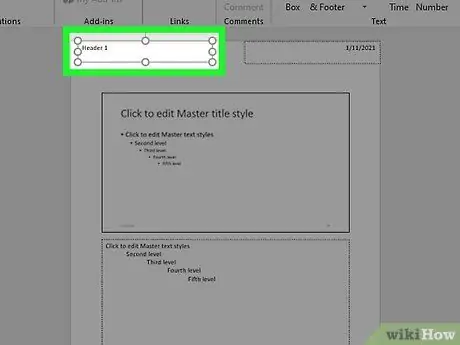
Step 6. Adjust Header location
If you want to move the header elsewhere, hold down the mouse cursor on one of the surrounding lines until a four-way arrow appears. Hold down the mouse button and drag the header to another location.
- Moving the header to another location in Master Notes will not move it on the Handout Page; You'll need to switch to Handout Master on the Views label if you want to reposition the header that organizes the print.
- Footers can also be moved this way.
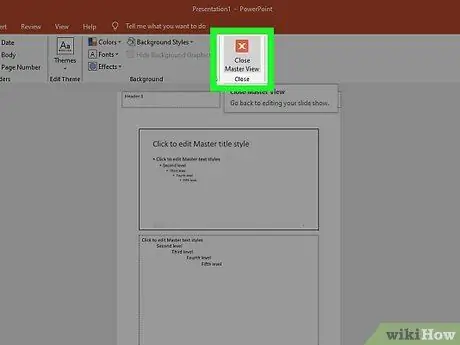
Step 7. Click “Close Master View”
This will return you to the PowerPoint slide.
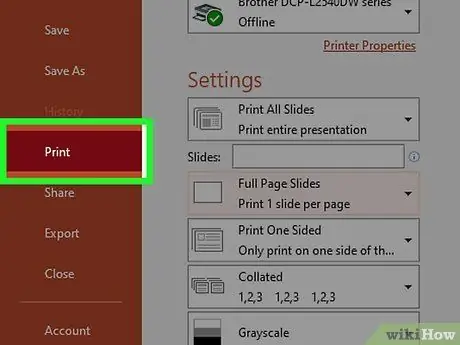
Step 8. Print a flyer or note page
After pressing “print” on your PowerPoint presentation, find the “Print What” area of the print dialog box. This option is set to “Slides” by default, but you can change it to either the “Handouts” or “Notes Page” page.
- If you select “Handouts”, you will see an option to change the number of slides per page. The initial setting is 6 slides, but if you want other people to be able to read the page content, we recommend setting it to 2-3 slides.
- For the “Notes Page” option, each slide will print its page with a series of lines below for a place to write notes.
Method 3 of 3: Using Footer
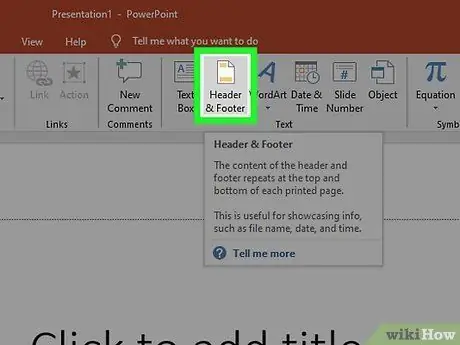
Step 1. Click “Insert” then “Header & Footer”
If you don't mind where the repeating text appears, one way to include a series of text on each slide is to use a footer. This text will appear at the very bottom of each slide instead of at the top.
- For PowerPoint 2003 or earlier versions, click “View”, then “Header & Footer”.
- If you really need a header that sits uniformly in the center of the very top of the page, we recommend trying to use an image or a text box.
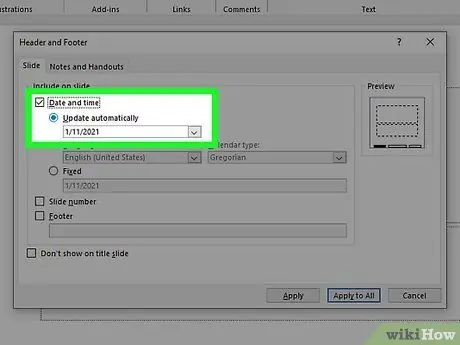
Step 2. Place the box next to “Date and Time”
If you want each presentation slide to display the current time and date, select this option.
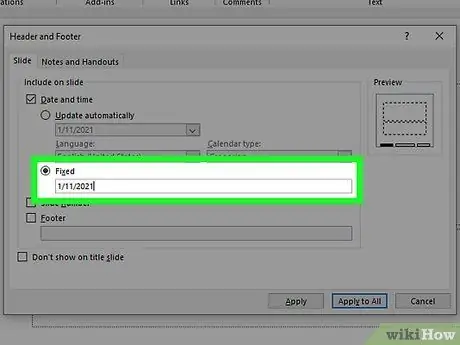
Step 3. Create one date to display on each slide
If you want the date to be the same on every slide, regardless of the presentation, type the date into the box that says “Fixed”.

Step 4. Check “Footer” and add it to the text
If you want to standardize a bit of text other than the date, type that text into the box. The text typed here will appear on each slide.
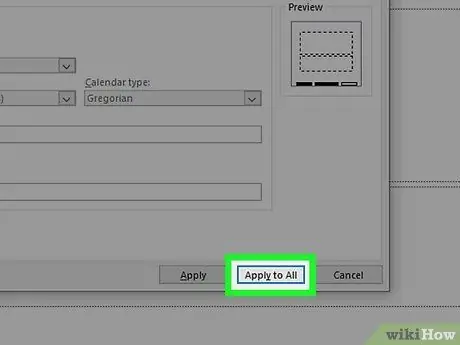
Step 5. Click "Apply to all" to propagate the changes made
This step will add a repeating footer at the bottom of each slide.

Step 6. Slide the footer to the top of the slide
If you want the footer to appear at the very top of the slide (so that it looks like a header) click the footer text until it is surrounded by dots that form a box, then drag it to the top of the slide.
This action will not be carried over to other slides in the presentation. You will need to move the footer on each slide
Tips
- When presenting with PowerPoint as part of a class activity or practice, consider printing the slides in Slide Note format. The extra line at the bottom of each page should be wide enough for notes to be written on.
- You can edit PowerPoint presentations portable with Google Slides.






